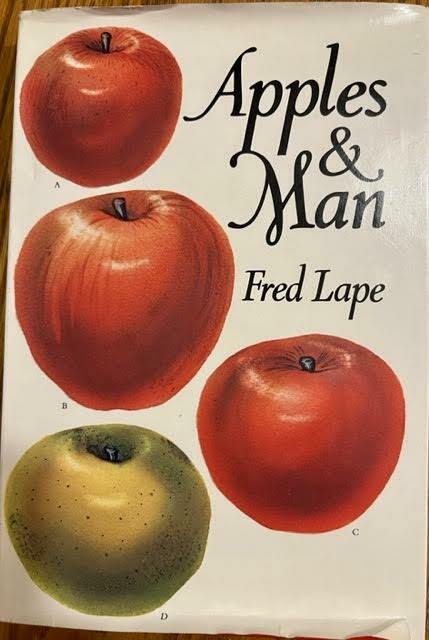
“Apples and Man,” written by Arboretum founder Fred Lape and published in 1979, is an ode to the incredible genus Malus.. But it also poses a warning about the growing threat by the proliferation of new insecticides, fungicides, and herbicides.
The genus Malus is an evolutionary success story, sprouting, growing and thriving in a wide variety of habitats. The species that were native to North America are almost unrecognizable from the fruit you see in the grocery store. They were smaller both in tree habit and fruit production. The fruit was small, hard, sour and bitter! We know this group of apples as crabapples. They were a key component of any small farm in the early US, being used to make alcoholic cider and a concentrated fruit spread. Apples became more economically important as these settlers developed new varietals, perfecting them through grafting and selection. These apples could be eaten fresh, pressed into cider, fermented into an alcoholic cider, or frozen into applejack. They quickly became an important commodity crop; commercial growing of apples began on a large scale in the 20th Century.
The ubiquitous “Delicious” apple is a case in point.“Delicious” was not quite what the name suggests: its flavor much less complex than earlier varieties. But the tree was a huge improvement in yield and reliability. And the fruit’s skin was tougher - making it excellent for keeping and shipping. Thus began a shift in taste away from older varieties, all for the benefit of large agribusiness. It is here, Lape interjects, where “things get messy.”
The apple, now a full-blown commercial crop, began to require more and more upkeep in the form of fertilizers, pesticides and other chemicals in stark contrast to the hardy and robust apples that evolved alongside humanity (think Johnny Appleseed.). The following list of chemicals is from the 1974 “Spray Guide for Tree Fruits in Eastern Washington,” published by the Cooperative Extension Service of the College of Agriculture of Washington State University. All of these were to be applied at various stages prior to a commercial apple being purchased by a consumer: Dieldrin, Parathion, Dodine, Elgetol, Sevin, Guthion, Captan, Thiodan, Diphenylamine, Simazine, Paraquat, Ethrel, NAA , and Ethoxyquin. Had you looked at the list ten years prior, you would also see the recommendation of three or four sprayings of DDT.
Fred Lape ‘s book raises some serious questions about the future of the genus Malus. What will become of Esopus Spitzenberg, Gravenstein, Blue Pearmain, and Black Oxford, among countless other old cultivars? Will we defer to the easy-to-merchandise standardization preferred by commercial growers? What about the health consequences of chemically sustained agriculture? Or will we rediscover exciting heirloom varietals and re-learn how to grow apples in accordance with nature instead of in opposition to it? “Apples and Man” posits that the answers are up to us.
